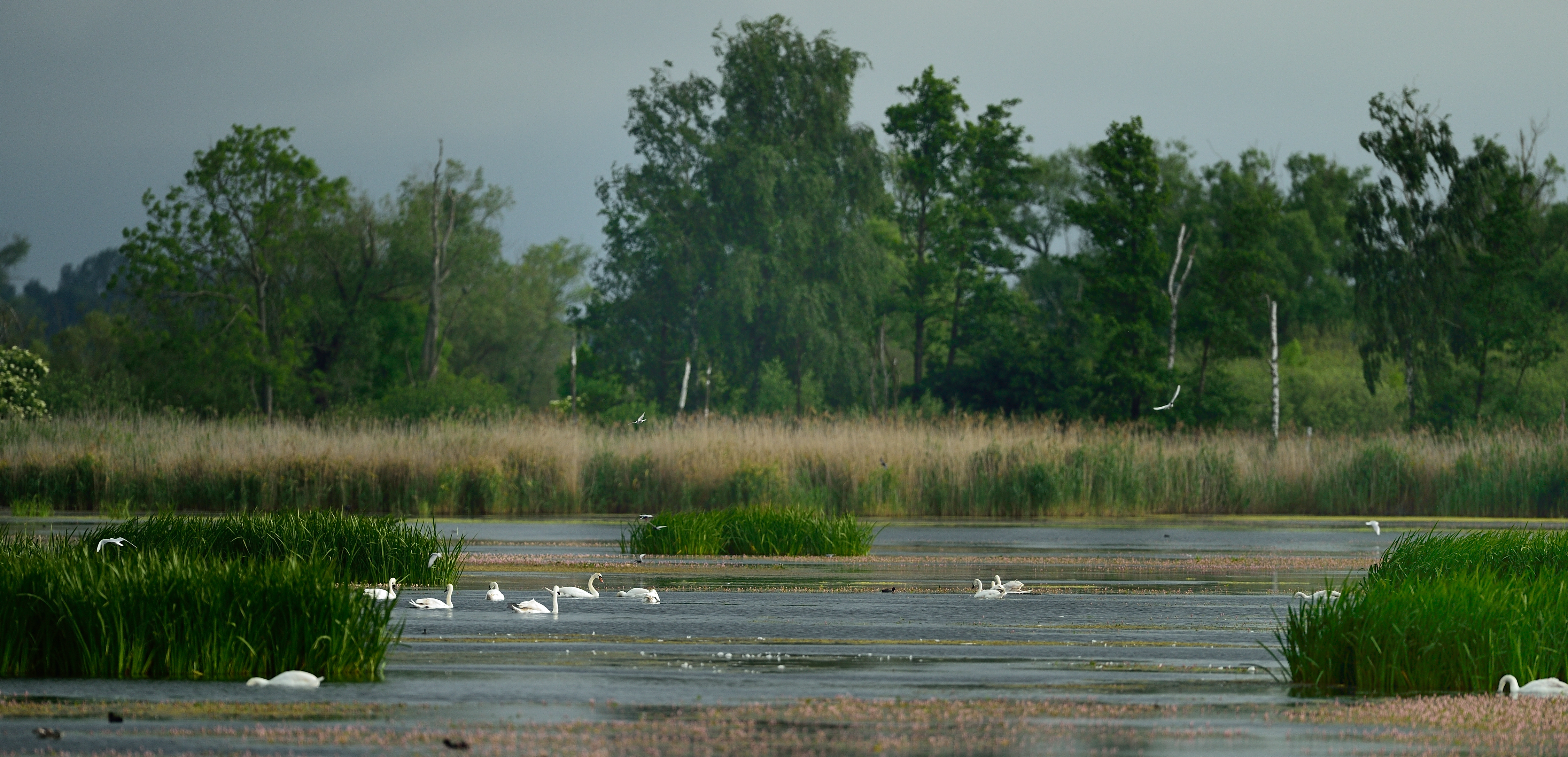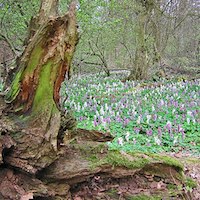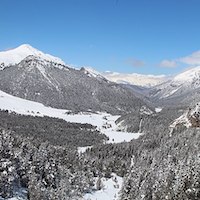
Background
The REWILD_DE research project focuses on the German part of the Oder Delta model area, which roughly covers the region west of the Stettiner Haff between Pasewalk, Ueckermünde, and Anklam, extending to the Baltic Sea coast. The area also includes the Peenetal River Landscape Nature Park from Jarmen to Anklam and large parts of the island of Usedom, excluding the coastal strip along the Baltic Sea.
What is Rewilding?
Rewilding can be described as the "promotion of wildness". It aims to reintroduce natural processes into ecosystems by reducing human intervention and promoting natural landscapes in collaboration with communities and residents. It does not exclude human use but seeks to promote a more natural approach to management and economic benefits, such as sustainable agriculture, forestry, or nature-based tourism.
Rewilding
- promotes biodiversity
- strengthens ecosystems’ adaptability and resilience, particularly in the face of climate change,
- enables sustainable human use of nature (in the form of "ecosystem services") and long-term sustainable regional development and regeneration of rural areas.
- Rewilding is a process-oriented approach to nature and biodiversity conservation.
- In contrast to traditional conservation approaches, rewilding does not focus on restoring a historical condition or maintaining a specific conservation target. Rather, the management objective is the (re)establishment of three ecological processes: (i) dispersal, i.e. migration possibilities between population, (ii) stochastic disturbances and (iii) trophic complexity. Through their interaction, these processes are to increase the resilience and naturalness of degraded ecosystems while reducing the need of human management.
(Perino et al. 2019)
- Rewilding is not defined by legal provisions, as is the case with traditional protected areas, but is based on the voluntary participation of stakeholders or residents. This requires a rewilding strategy tailored to the specific area, considering the local natural habitats, land use, and other societal and socio-cultural factors.
- The presence of large wildlife species in rewilded areas, as well as the presence of natural landscapes, provides a basis for promoting nature-based tourism. The agricultural and forestry sectors can also improve their adaptability to climate change by adopting a more natural management approach.
- Rewilding is taking place in culturally influenced landscapes in Central Europe. The participatory processes required to involve local communities in the region provide an opportunity to include and strengthen socio-cultural perspectives on the affected landscapes.
Rewilding Examples
Restoring natural processes may require different rewilding measures depending on the condition, size, and landscape context of an ecosystem. The following examples illustrate the range of possible measures.
Natural dynamics in the Leipzig floodplain forest
 Since the mid-19th century, flood control and changes in forest management have altered the tree species composition of the Leipzig floodplain forest. Species such as sycamore maple, Norway maple and ash have increased, displacing typical floodplain species such as hornbeam and oak. In the 1990s, employees of the city of Leipzig started a rewetting experiment by flooding a test area once a year. This led to an increase in typical floodplain species such as oak and hornbeam, and a decrease in moisture-intolerant species that had become dominant after drainage (e.g. sycamore and Norway maple). At the same time, a reintroduction of moisture-loving snails and several species of ground beetles typical of riparian forests was observed.
Since the mid-19th century, flood control and changes in forest management have altered the tree species composition of the Leipzig floodplain forest. Species such as sycamore maple, Norway maple and ash have increased, displacing typical floodplain species such as hornbeam and oak. In the 1990s, employees of the city of Leipzig started a rewetting experiment by flooding a test area once a year. This led to an increase in typical floodplain species such as oak and hornbeam, and a decrease in moisture-intolerant species that had become dominant after drainage (e.g. sycamore and Norway maple). At the same time, a reintroduction of moisture-loving snails and several species of ground beetles typical of riparian forests was observed.
The results of this long-term experiment will also be used in the implementation of the "Living Luppe" project, which aims to rewet several drained arms of the Luppe.
The implementation phase is accompanied by a comprehensive communication strategy that offers the local population a variety of opportunities to engage with the floodplain ecosystem. These include multimedia learning materials for environmental education programmes and loanable 'floodplain print bags' with magnifying glasses, beakers and maps, which children can use to learn about the flora and fauna of the floodplain forest and to explore its ecology and topography through interactive experiments. A local nature conservation society organises field trips and regular public discussions. Two research projects are investigating the ecological effects of the measure and assessing the acceptance and perception of natural floodplain forest processes.
Space for natural processes in the Swiss National Park
 The Swiss National Park is the oldest national park in Europe and the largest protected area in Switzerland. As early as 1909, the founders of the park recognised the conservation value of the area around the Fuorn Pass. They negotiated a lease with local communities and set up the Swiss Nature Conservation Foundation to secure long-term funding for the park.
The Swiss National Park is the oldest national park in Europe and the largest protected area in Switzerland. As early as 1909, the founders of the park recognised the conservation value of the area around the Fuorn Pass. They negotiated a lease with local communities and set up the Swiss Nature Conservation Foundation to secure long-term funding for the park.
Socio-economic studies show that the park now attracts around 150,000 visitors a year, making a lasting contribution to the economic development of the region.
To create space for natural processes, the park follows a strict zero-intervention strategy. Human activities such as hunting, agriculture and forestry are prohibited. The only exceptions are targeted measures to avoid conflict with local communities. In the past this has included occasional hunting of red deer in areas adjacent to the park.
Ibex and bearded vultures have been reintroduced to increase the complexity of the food web. Natural disturbance events are not affected, and dispersal opportunities are high for most species. The zero-intervention strategy has resulted in high population densities of red deer, ibex, chamois and roe deer, which were very rare in Switzerland at the beginning of the 20th century. In particular, the increase in red deer numbers has led to a greater diversity of plant species in the subalpine grasslands. In recent years, large carnivores such as brown bear and wolf have been more frequently sighted.

